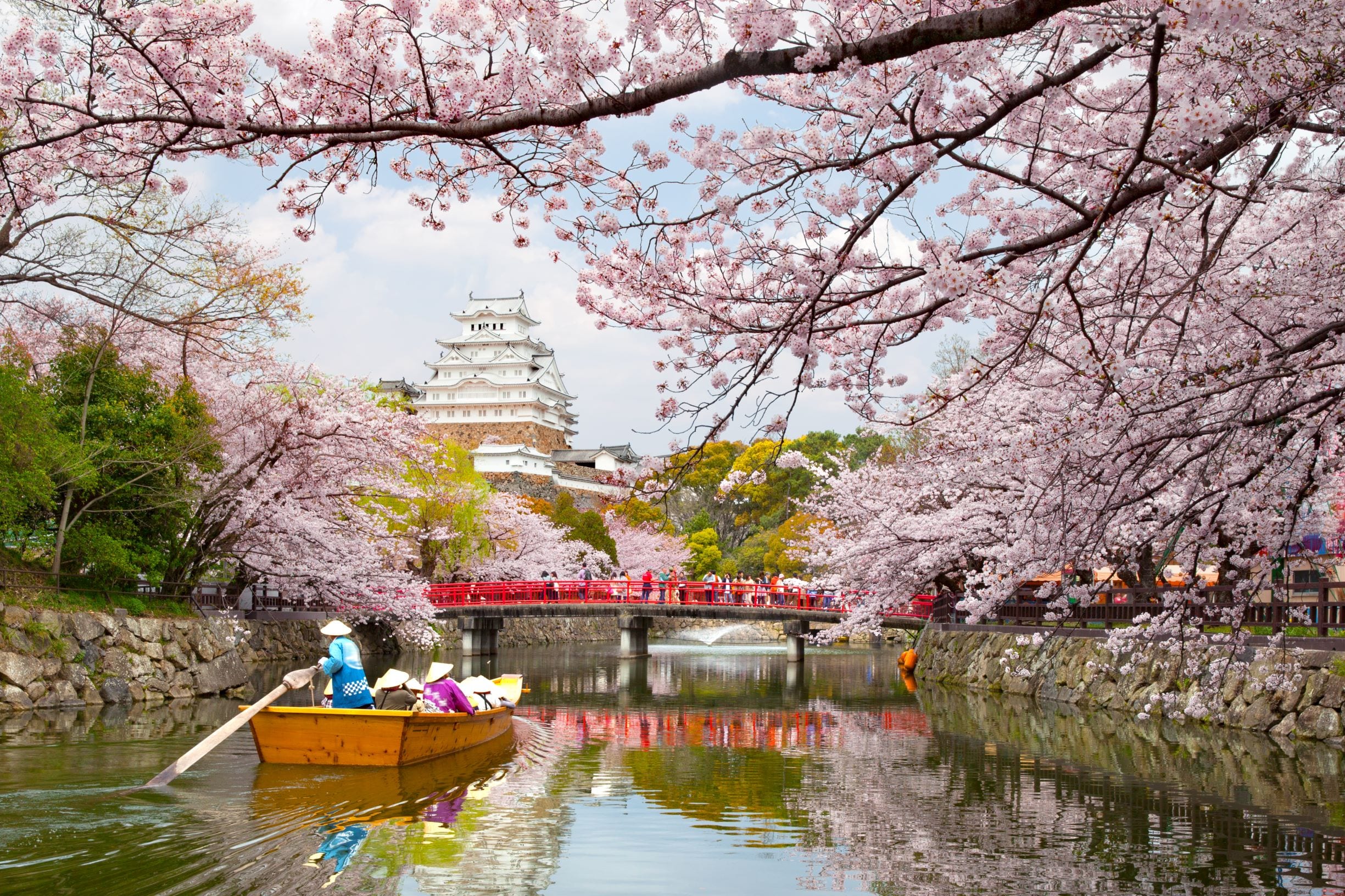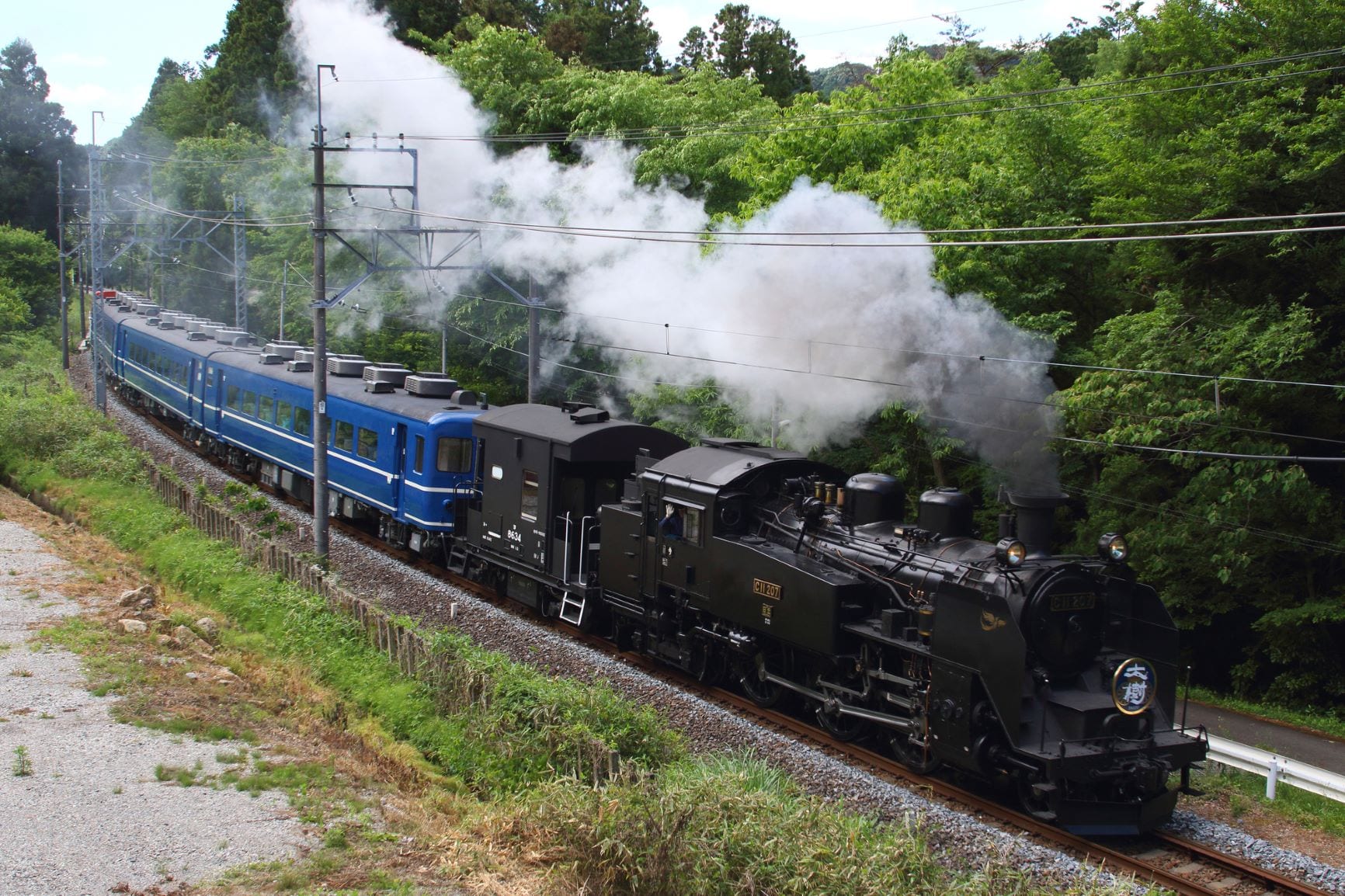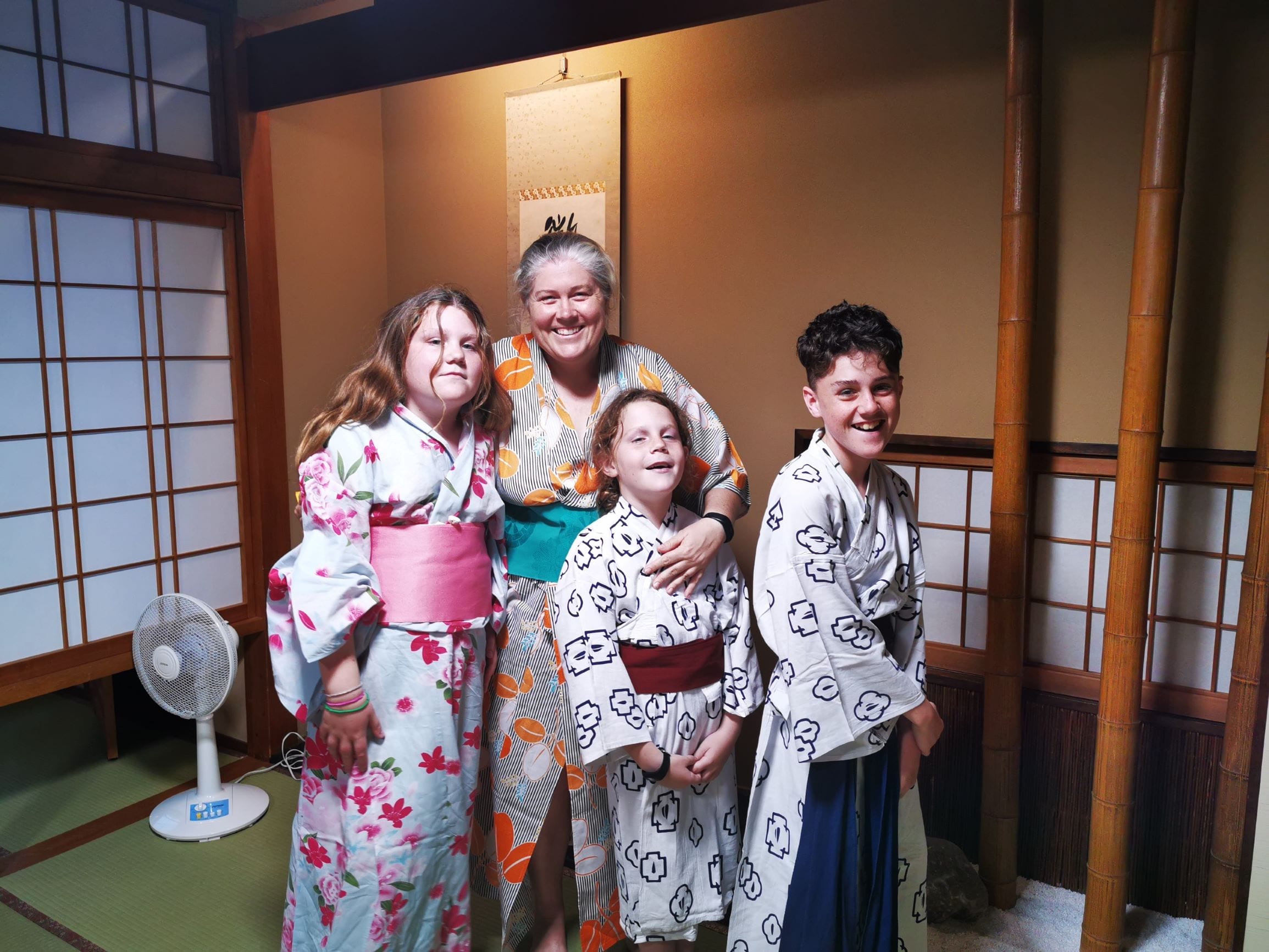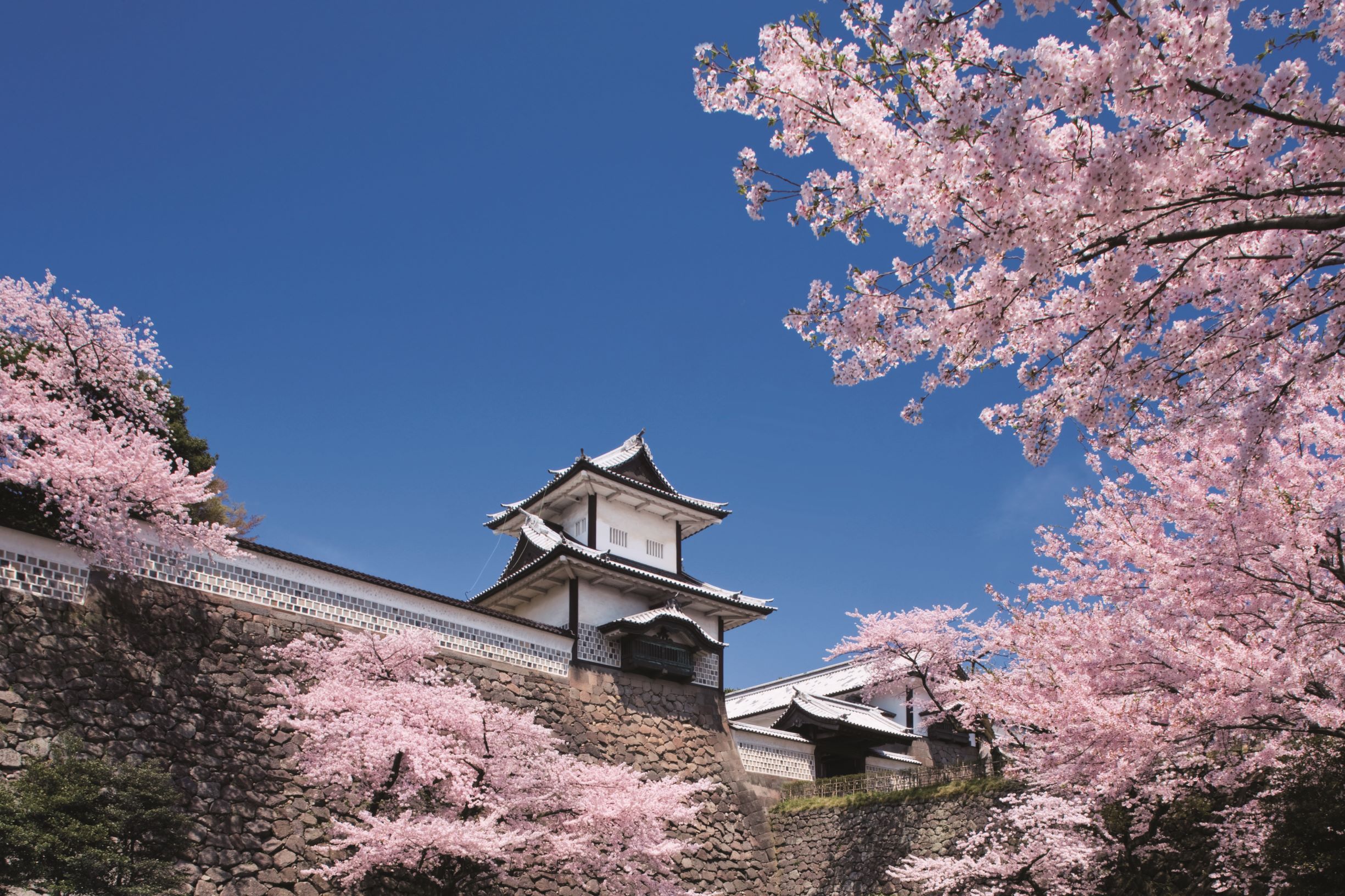Why travel to Japan with children?
Safe, clean and modern, Japan is an interesting and amusement-heavy destination for families.
Japan has a distinct and diverse cultural mix of traditional and modern walks of life, and families with kids of any age will find plenty to do. Japanese culture is very welcoming toward children and you’ll find this interesting diversity of culture will delight all ages.
A few of the main highlights for families travelling to Japan include the lively pop and anime culture capital, Tokyo, exploring fairy-tale like villages and snow-capped mountains in northern Hokkaido, and traditional cultural sites throughout the country.
If you’re looking for quirky and culture Tokyo’s your best choice where you’ll find hedgehog cafes, robot restaurants and unique city districts such as the technology-centric Akihabara or the ancient Asakusa’s with Sensoji, a Buddhist temple built in the 7th century.
If you’re looking for sun and a Japanese beach break, head to the southern island of Okinawa and ski / snowboard-loving families will find plenty of powder in either Hakuba or Niseko.
Read more: 5 reasons to ski Japan with kids and Japan made accessible for families

The kids will love
Tokyo
Tokyo is a bustling and exciting hub of pop culture! There are amusement parks – Tokyo Disney & Tokyo Dome City; everything animation – the Ghibli Museum, and dozens of indoor theme parks dedicated to anime culture (among them J-World Tokyo and Gundam Front Tokyo); lively karaoke parlours; and countless museums and play centres to choose from – Legoland Discovery Centre, KidZania, Fire Museum, National Museum of Nature and Science, Museum of Emerging Science and Innovation, and many more.
Read more: 48 hours in Tokyo with kids and Hotel review: The Peninsula Tokyo
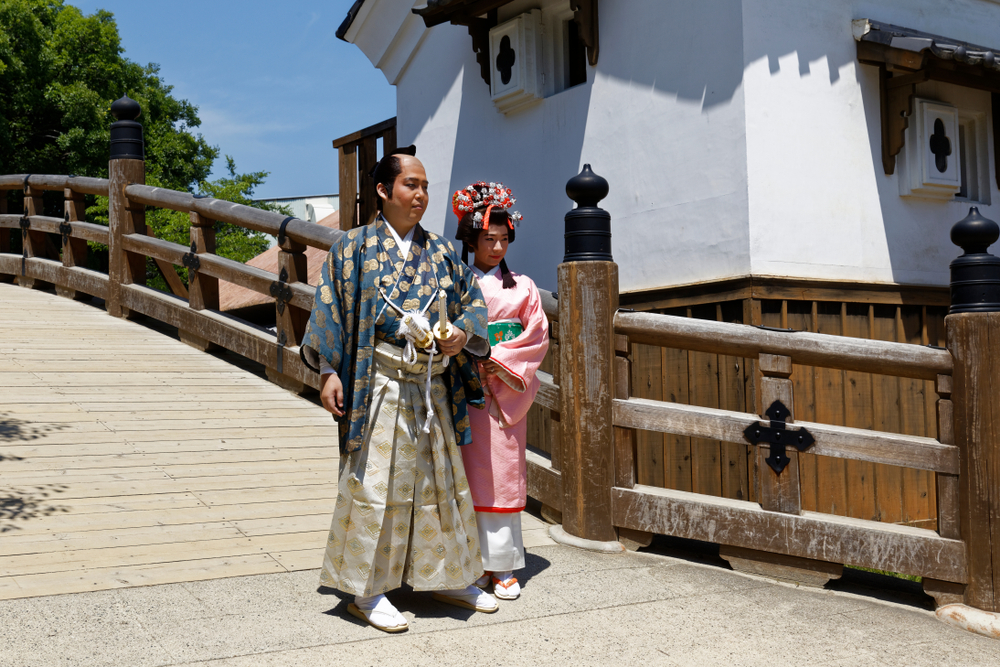
Kyoto
Kyoto is interesting city to explore for kids and adults alike. Kid-friendly entertainments include the International Manga Museum, Kyoto Railway Museum, Arashiyama Monkey Park, Kiyomizu-dera ( a hands-on underground sanctuary), Kyoto Imperial Palace Park (impressive fields and woodlands perfect for picnicking and bike riding).
Read more: Secret Japan: Where to go after Tokyo and Kyoto and How to snap a great Kyoto photo
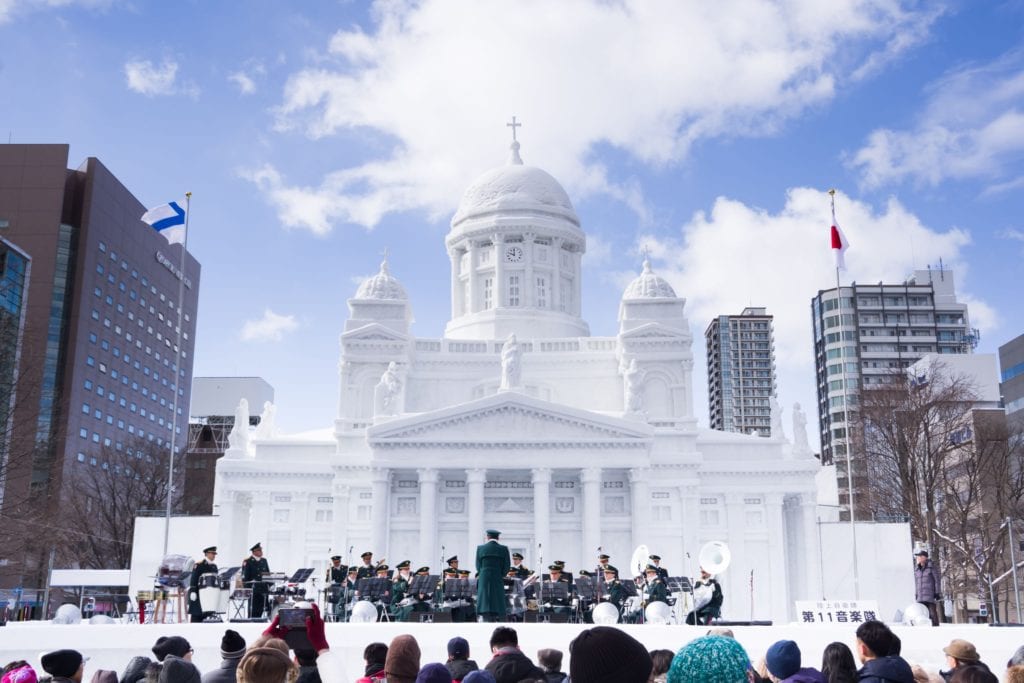
Sapporo
This northern destination is perfect for skiing and snow-boarding during winter and great for hiking and camping from spring to late autumn – the destination makes for an adventure-filled outdoor holiday.
Other attractions for kids around Sapporo are Shiroi Koibito Park (toy museum, candy store and chocolate factory in one!), picnicking at Odori Park during cherry blossom season, the Hokkaido Shrine (kids can participate in the traditional customs) and bike tours around the city.
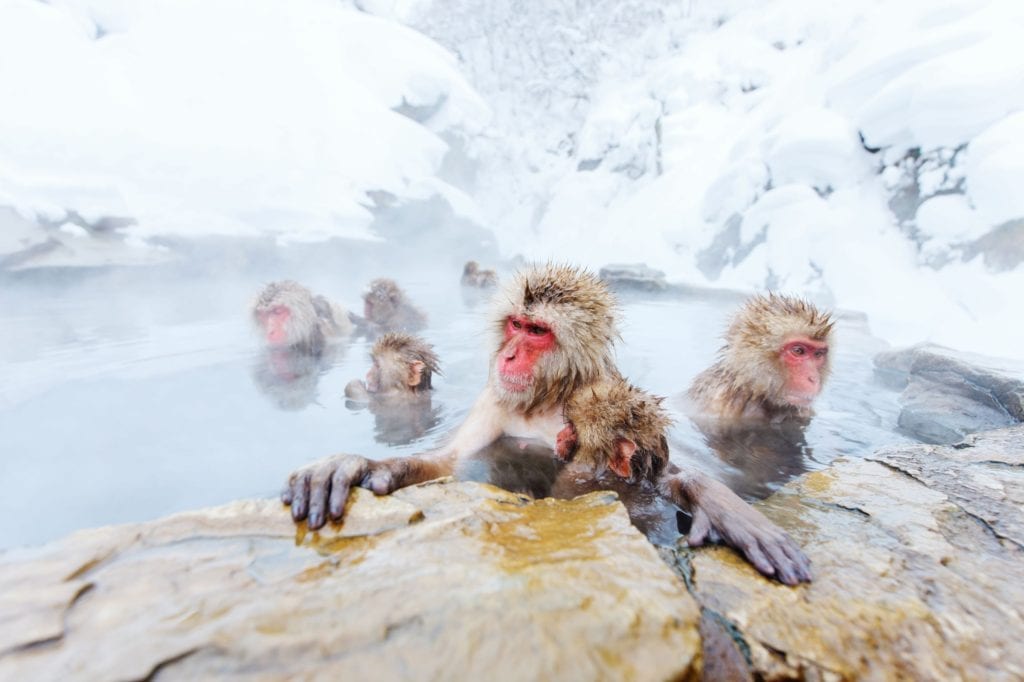
Best time to travel
Japan is great for travel during spring, March to May. This is a beautiful time of year in Japan, when cherry-blossoms bloom, the countryside is lush and weather is fantastic throughout most of the country. This is high season in Japan so accommodation prices can be quite high – early bookings are recommended.
Mid-autumn to early winter, October to early December, is also a beautiful time to visit Japan, and somewhat less crowded than the spring high season. November is a niche window for travel, when temperatures are still reasonably mild and the landscapes are lush following typhoon season during September. Accommodation prices and crowds are moderate during this time.
January to March is high season in the ski fields and mountain retreats of northern Japan. Throughout the rest of the country, this is the low season. Many business remain closed from late December to early January, but accommodation prices are very low and most sites are uncrowded.
Things to do in Japan with…
Young children are welcomed throughout Japan. There are attractions for kids in most major cities, with top recommendations for kid-friendly activities and environments being Tokyo and Kyoto.
Kids of all ages will love the vibrant capital, Tokyo. Full of quirky pop-culture and amusements abound, Tokyo is a modern and colourful city – kids will never be at a loss for things to do. Try to catch a baseball game at the Tokyo Dome or Sapporo Dome – the sport is loved in Japan and the enthusiastic atmosphere is absolutely infectious.
Northern city, Sapporo, is a fantastic destination for adventurous older kids and teenagers. Great during both ski season and other times of the year, Sapporo is adventure-heavy and beautiful. Other activities such as visiting traditional shrines and more traditional Japanese food experiences will particularly appeal to older children.
Older kids might like to head to Lake Eppalock, a vast manmade lake around 30 minutes from Bendigo, for boating, swimming and waterskiing. Golden Nugget Discovery Tours offer adventure tours for those visitors who like a little action with their sight-seeing. Don overalls, a hard hat and a miner’s lamp to venture to the heart of a mine, 85 metres below ground to hunt for gold. Their Night Eco Spotlight Walk showcases the Australian Bush as it comes to life with local nocturnal wildlife including Kangaroos, Possums, Gliders, Owls, Frogs and Bats.
Speaking of things that go bump in the night, take a ghost tour of Ballarat, Australia’s most haunted city, with Eerie Ghost Tours. Travel through underground buildings, alleyways, and even the remains of the old Ballarat goal, the location of many an execution, on a paranormal quest that’s not for the faint of heart.

Getting around Japan
Train: Japanese trains are among the best in the world – reliable, affordable and very fast. Japan Railways (JR) is the main railway system with routes to all major destinations. There are a great variety of train types and passes in Japan, which are worth researching to determine the best way for your family to travel. Generally, most routes are serviced by local, express and ‘limited’ express trains (with reserved seats and more comfortable carriages). Shinkansen (bullet trains) are one of the fastest in the world, running at 320km/h. Keep in mind that shinkansen trains run on separate tracks and stations are sometimes located at a distance from JR stations.
There are a variety of rail passes available to travellers entering Japan on tourist visas, and most offer great value. The Japan Rail Pass is the best for extensive train travel throughout Japan. Tickets are approximately half price for children and details can be found at www.japanrailpass.net Other popular passes (recommended for travel in specific regions) include the Hokuriku Arch Pass and JR East, JR West and JR Central Passes.
Bus: Buses are a cheaper, though slower, way to travel. Japan Railways also operates the largest network of buses in Japan – the company is reliable and tickets can be purchased at any train station. Willer Express is the other major company, somewhat cheaper than JR, and offers 3 – 5 day passes. Tickets for Willer Express (and other bus companies) are available at japanbuslines.com
Car: For some remote areas of Japan such as Hokkaido, Kyushu and the Southwest Islands, travel via car is the most convenient option. Car rentals rates are approximately $60 – $90 per day, plus $10 – $15 per day to cover insurance costs. There are several rental agencies to choose from, usually located at airports and major train stations. Children under the age of six must ride in a car seat, which are available for hire from most rental agencies. Keep in mind that some regional rail passes include car hire. Expressway Passes are available, often offering decent savings on the major routes across Japan.
Air: Flights in Japan can often be faster and cheaper than train travel for covering long distances. Japan Airlines and All Nippon Airways are the major airlines with the most extensive domestic networks. Both offer significant discounts of up to 50% for booking at least a month in advance. There are several budget airlines which also travel to the more distant destinations such as Hokkaido and Okinawa.
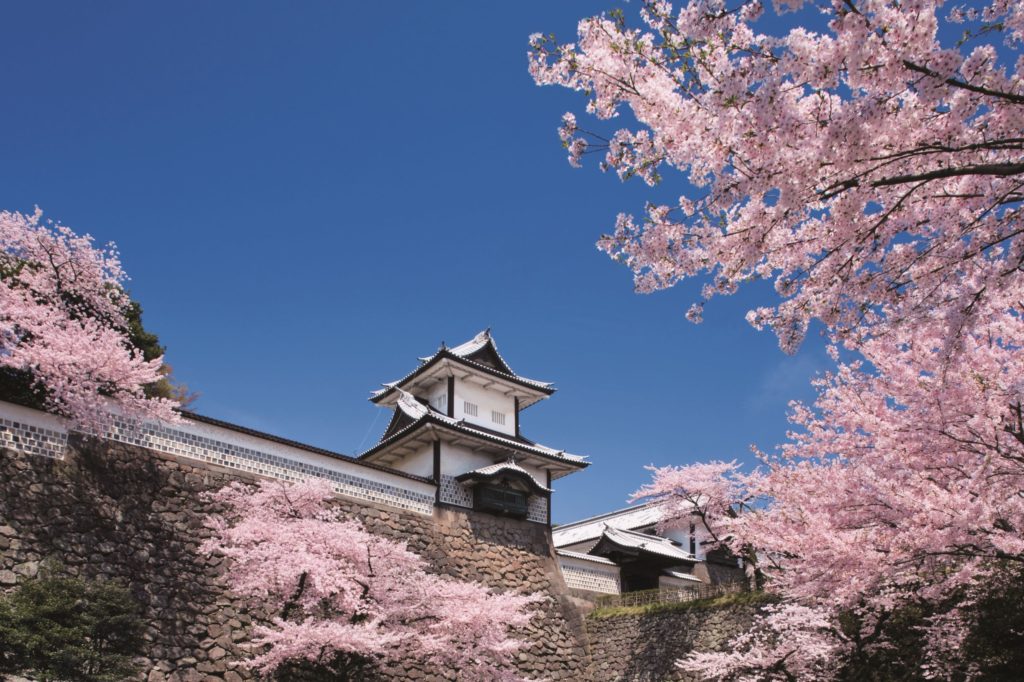
More about Japan for families
Accommodation
- Hotels in Japan generally only offer double or triple rooms – rooms with two double beds or more can be difficult to find. For young children and babies, most hotels can provide a cot for a small extra fee. Some international hotels, particularly in the larger cities can offer recommendations for English-speaking childcare agencies.
- Traditional accommodations are wonderful options for families – often the go-to option for most Japanese families when travelling. Ryokan, traditional Japanese inns and minshuku, family-run B&Bs, offer large rooms with traditional futon beds or sleeping mats. These offer a more interesting and authentic experience for families.
- If you’re just stopping over, the new in December 2022, Villa Fontaine Premier Haneda Airport is attached to Haneda airport terminal 3 and is a very convenient option for families wanting to stay close to the airport.

What to pack
- Baby and child essentials are widely available throughout Japan at pharmacies and shopping malls.
- Ski and hiking gear is recommended for visiting the northern parts of Japan which is full of winter-sports and opportunities for adventure. Warm, layered clothing is recommended for visiting in winter as some areas in Japan reach temperatures well below zero, while others remain quite mild.
- Wet weather gear is essential for both summer and autumn, June to November. The summer months experience high heat and very heavy rainfall, while early autumn is typhoon season, particularly affecting the northern areas of Japan.
Popular stories
-

The ultimate guide to things to do in Japan with kids
Why travel to Japan with children? Safe, clean and modern, Japan is an interesting and amusement-heavy destination for families. Japan has a distinct and diverse cultural mix of traditional and modern walks of life, and families with kids of any age will find plenty to do. Japanese culture is very welcoming toward children and you’ll …
-

A yen for Japan – the best family ski resorts in Japan
Famous for its powder snow and hot springs, Japan is winter wonderland with kids. Here are our favourite family ski resorts in Japan.
-

Chase the sunlight in Nikko, Japan
It might be right next door to Tokyo, but Nikko is Japan’s best-kept secret. Check out the top 3 activities for families in sunny Nikko.
-

Why Japan is awesome for families with wheelchair users
The Smiths pick Japan as their all-time favourite destination. You’ll see why when you read about sushi, Harry Potter and wheelchair accessible attractions.
-

Best time to travel to Japan
Want photos of cherry blossoms? Want to hit the ski slopes? Use this season-by-season guide to choose the best time to travel to Japan for your family.
-

Off the beaten track in Japan – Ishikawa with kids
Tokyo? Tick. Ski slopes? Tick. Now it is time to immerse in the samurai culture, interactive art and lush gardens of Japan’s best kept secret, Ishikawa.
Janeece Keller is the founder and editor of Family Travel. She mostly travels with her husband and two young kids. She has a large blended family that lives in Australia and Europe. She has visited 52 countries and lived on 3 continents. From camping to luxury resorts Janeece tries to make sure her family has diverse holiday experiences each year. She is an avid hiker and ocean swimmer who loves good food, margaritas and heading off the beaten path.

